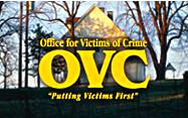Disparities Between Rural and Urban Jurisdictions
In most rural areas, the efforts of victim/witness advocates and the needs of victims and witnesses seeking their services are hampered by the geography of a jurisdiction, the availability of funding, the resources in the community, and the driving force of office priorities. For the rural prosecutor, lower crime rates and smaller populations mean less state and federal funding for prosecution and for local service providers. In 1997, for example, Illinois spent more than $261 million in state and federal funds on victim services. Most of the funding went to the Illinois Department of Children and Family Services to address child abuse and neglect. Of the remaining $35 million, $9 million was dispersed under the Victims of Crime Act (VOCA) and $5 million was dispersed under the Violence Against Women Act (VAWA).
Victim service programs in 26 urban counties received $7.3 million in VOCA funds, while 76 rural counties split less than $1 million. Similarly, less than 10 percent of VAWA funds went to rural programs (Sifferd 1998).
The limited funds allocated to victim service programs in rural jurisdictions have a significant impact on the advocates' ability to meet even the most basic rights of victims and witnesses. According to a 1999 survey conducted on nearly 1,300 prosecutor-based victim/witness programs throughout the United States, APRI found that the larger a prosecutor's jurisdiction and office, the more likely the office was to provide an extensive range of services for victims of crime. In fact, a significant percentage of small offices reported that they were unable to assist victims with the most basic services, most notably informing victims of their rights (22 percent); notifying them of court proceedings (24 percent); furnishing victims with referrals to community services (24 percent); helping victims with their victim impact statements (29 percent); and providing restitution (30 percent) (APRI 2002). Clearly, changes need to be made in rural America to better enable victim/witness providers to serve crime victims.
|







